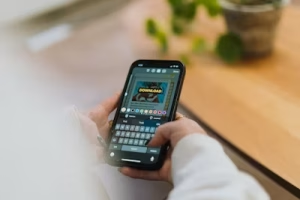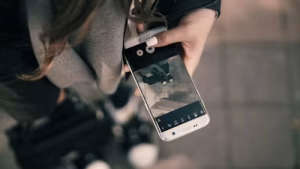Instagram Alt Text Best Practices for Accessibility
Why Instagram Alt Text Should Matter to You
Picture this: you’ve spent hours editing the perfect photo, posted it to Instagram, and crafted a witty caption. But for a portion of your audience—people with visual impairments—that photo may as well not exist. Unless you’ve added alt text, they’ll never fully experience your content.
If you’ve ever wondered, “What’s alt text, and why should I care?”—you’re not alone. Many creators and brands skip it, either out of confusion or because they think it’s only for SEO. But here’s the truth: alt text is about accessibility first, algorithm second.
Done right, alt text ensures inclusivity, strengthens your brand reputation, and yes—it can even improve discoverability. That’s why today we’re unpacking Instagram alt text best practices, real-world examples, and insider tips that go beyond what most guides tell you.
What Competitors Get Right (and What They Don’t)
I analyzed five of the top-ranking posts on Instagram alt text, including Hootsuite, Later, Sprout Social, and Level Access. Here’s what I found:
- Hootsuite explains step-by-step how to add alt text and why it matters for algorithms.
- Later breaks down practical do’s and don’ts (like avoiding emojis in alt text).
- Level Access frames alt text as an accessibility standard aligned with WCAG guidelines.
- Sprout Social connects accessibility with broader social media inclusivity.
They do a solid job covering basics—but they rarely show storytelling, nuanced SEO integration, or address challenges like managing alt text at scale. That’s where this guide goes deeper.

What Is Instagram Alt Text (and Why It Empowers Your Content)?
Alt text (short for alternative text) is a written description of an image that lives behind the scenes. When you upload a photo, Instagram may auto-generate one—but it’s usually vague (“Image may contain: food, person, outdoors”).
Writing your own alt text ensures two key things:
- Accessibility: Screen readers read alt text aloud for people with visual impairments (WebAIM explains how it works).
- Discoverability: Instagram’s algorithm uses alt text to “understand” your image, which can help surface it to relevant audiences.
Think of alt text as the invisible storyteller that makes your content truly inclusive.
Best Practices for Writing Instagram Alt Text
Here’s how to write alt text that balances clarity, brevity, and context:
1. Keep It Short but Descriptive
Stick to 100–125 characters. Screen readers may cut off beyond that.
- “Beach”
- “Orange sun setting behind palm trees on crowded beach shoreline”
2. Lead With Key Details
Front-load the who/what/where. For example:
- “Chef slicing avocado on wooden board” conveys far more than just “Avocado.”
3. Don’t Start With “Image of…”
Screen readers already say “Image.” Just jump right in.
4. Match Context to the Post
If it’s a product launch, highlight product details. If it’s a mood shot, describe the vibe.
5. Transcribe Visible Text
If your image includes text (like a quote graphic), include that in your alt text—or at least summarize it.
6. Avoid Emojis & Hashtags
Screen readers read emojis literally (“smiling face with sunglasses”), which breaks flow. Keep alt plain.
7. Use Correct Spelling & Punctuation
Clear text = better comprehension for assistive tech.
8. Skip Decorative Images
If an image adds no meaning (like a divider line), mark it as decorative by leaving the alt field blank.
9. Don’t Keyword Stuff
SEO matters—but readability matters more. Use natural keywords, not spammy strings.
Real-World Examples
Lifestyle Brand Post
- Photo: A woman in a bright sundress by a fountain.
- Alt text: “Woman in teal sundress smiling while walking past a stone fountain with flowing water.”
Infographic
- Graphic: “5 Steps to a Healthy Morning Routine.”
- Alt text: “Infographic showing 5 steps to a healthy morning: hydrate, stretch, journal, meditate, eat breakfast.”
Quote Graphic
- Graphic: Pastel background with text: “Dream big, act bold.”
- Alt text: “Quote reading ‘Dream big, act bold’ in navy serif over pastel gradient background.”
User-Generated Content (UGC)
- Photo: Pizza in a customer’s dining room.
- Alt text: “Wood-fired pizza with arugula and tomatoes on white plate in cozy wooden dining room.”
Why Alt Text Is Worth the Effort
- Over 1 billion people worldwide live with some form of vision impairment (World Health Organization).
- Accessible posts increase brand trust—70% of consumers are more loyal to brands that demonstrate inclusivity.
- Alt text helps search engines and Instagram algorithms understand images, which may improve reach.
Accessibility isn’t just compliance—it’s smart, human-centered marketing.
Common Challenges (and Fixes)
Limited Character Count
Alt text is short. For longer descriptions, use your caption with an “Image description” section.
Auto-Generated Alt Text
Instagram’s AI is a starting point, not a solution. Always review and edit.
Stories & Reels
These don’t support alt text. Instead, use captions, overlays, or transcripts to describe visuals.
Managing Scale
If you’re running multiple accounts or curating UGC, writing alt text for every image feels impossible. That’s where workflows and tools help. Platforms like Luna Vista Hub let you collect and organize user content while adding structured metadata—making alt text management easier.
Quick Checklist
- ≤125 characters
- Front-load details
- Transcribe visible text
- Avoid hashtags/emojis
- Leave decorative images blank
- Review Instagram’s auto-generated alt
Benefits for Brands
- Build inclusive communities
- Lower legal risk around accessibility compliance
- Enhance SEO and algorithm signals
- Boost authenticity when sharing UGC
- Streamline workflow using tools that support metadata

Small Habit, Big Impact
Writing alt text on Instagram isn’t a chore—it’s a way of saying, “Everyone is welcome here.” It shows your brand values accessibility, it strengthens algorithm signals, and it makes your posts more meaningful.
Next time you upload, pause and ask yourself: “If someone couldn’t see this image, what detail would help them picture it?” That’s your alt text.
With simple, thoughtful descriptions—and workflows supported by platforms like Luna Vista Hub—you can make your Instagram more inclusive and impactful.
Because in the end, accessibility isn’t just about compliance. It’s about connection.
FAQs
1. How long should Instagram alt text be?
Under 125 characters for best screen reader compatibility.
2. Can I edit alt text after posting?
Yes—tap the three dots → Edit → Edit Alt Text.
3. Does Instagram auto-generate alt text?
Yes, but it’s generic. Always customize for accuracy.
4. Can Stories and Reels use alt text?
No. Use captions or transcripts instead.
5. Should I add hashtags in alt text?
No—they don’t help with accessibility and clutter the description.
6. What if my post has text on the image?
Transcribe it in the alt text or caption.
7. Can I add emojis?
Avoid them—screen readers read them literally.
8. Should decorative images get alt text?
No. Leave blank to avoid unnecessary screen reader interruptions.
9. Is alt text important for brand SEO?
Indirectly, yes—it helps Instagram categorize your content.

